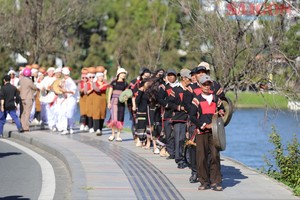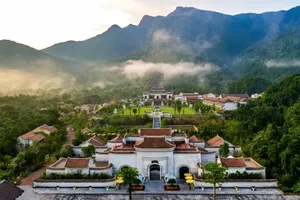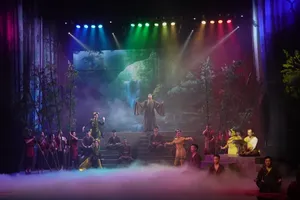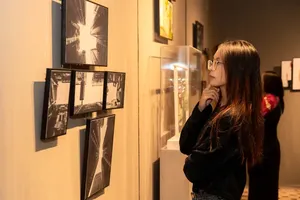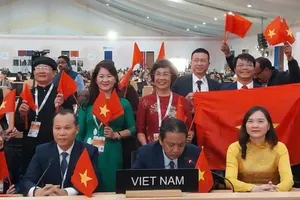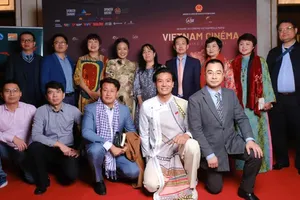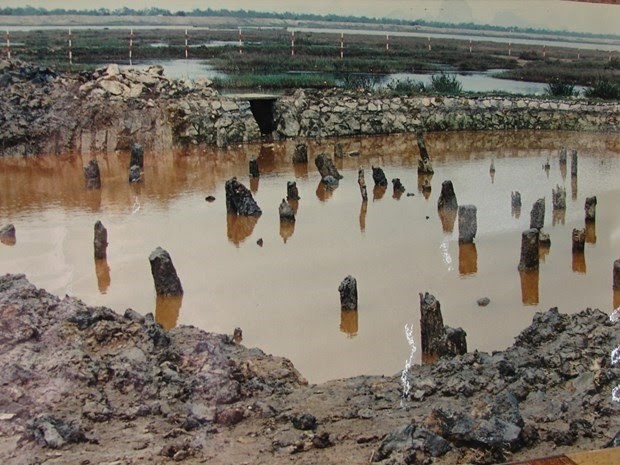 |
The Bach Dang pile yard in the Bach Dang historical relic area in Quang Ninh (Photo: the portal of Quang Ninh province) |
Specifically, during the preparation of the document, the consultant selected three pile yards namely Yen Giang, Dong Van Muoi and Dong Ma Ngua in Bach Dang historical relic area (Quang Yen township, Quang Ninh province) to include in the list of 32 relic sites in the dossier.
The Complex of Yen Tu Monuments and Landscapes is comprised of four clusters of special national historical relics: the Yen Tu historical relic and landscape area (Uong Bi city of Quang Ninh), the Tran Dynasty historical relic area (Dong Trieu township of Quang Ninh), the Tay (Western) Yen Tu relic and landscape area (Bac Giang), and the Con Son - Kiep Bac complex (Hai Duong).
A large number of relics and landscapes in the complex, including historical relics, architectural - artistic relics, archaeological relics, and scenic landscapes, have been recognised to have provincial or national importance.
These sites boast harmonious combination of natural landscapes and architectural structures with special values. Besides, the complex holds great historical significance as it is the birthplace of Truc Lam - the Vietnamese Zen Buddhism founded by King-Monk Tran Nhan Tong (1258 - 1308). It was also associated with the formation and development of the Tran Dynasty (1225 - 1400).
Previously, the Prime Minister assigned the People’s Committees of the provinces and related agencies to compile a dossier seeking the UNESCO-recognized world culture heritage status for the Complex of Yen Tu Monuments and Landscapes.
The localities have drastically implemented related affairs, including establishing a Steering Committee and a Working Group for preparing the dossier. Many meetings and scientific workshops have been organised to clarify the values of global significance of this complex.
Notably, Quang Ninh province’s authorities had working sessions with representatives of the Ministry of Foreign Affairs and the UNESCO Office in Vietnam, and Director of the UNESCO World Heritage Centre in March this year to consult and comment on the dossier.
So far, the initial nomination dossier with 17 clusters of relics and 32 relics have been basically completed. The 2,000-page document in Vietnamese and English language is also accompanied by hundreds of maps, simulation drawings, photos, clips showing historical, cultural, architectural values, intangible and tangible heritages and overall management plans of the three localities.
The People’s Committees of the three neighbouring provinces signed a commitment to work together to finalise the initial nomination dossier and submit it to the Ministry of Culture, Sports and Tourism by July 30, 2023.
